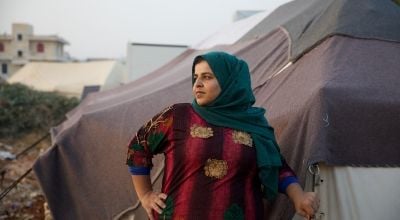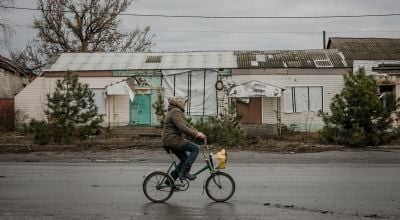
Read our 2023 annual report

Knowledge Hub
Learn about what's going on in Yemen in 2024, and why Concern is now working there.
In 2014, Yemen — the lowest-income country in the Middle East — became the site of a civil war (with proxy inventions). However, the conflict is only one aspect of a complex humanitarian crisis, furthered by climate change, water stress, political instability, and economic issues which left the majority of the country’s population without the resources or skills to live full, healthy, dignified lives.
Ten years later, the country has made several “worst” lists, among them the world’s worst humanitarian crises, worst hunger crises, and largest displacement crises. However, besides these headlines, Yemen remains largely ignored in western media — especially when it comes to the net effects that the last decade of conflict has had on the people living there. Here’s what you need to know about the crisis in Yemen in 2024, as well as what Concern is doing to help.

1. More than half of Yemen’s population will require humanitarian assistance in 2024
“The most prominent change for millions of Yemenis has been the dramatic worsening of their living conditions and the daily reality of death from starvation or the diseases arising from severe malnutrition,” writes Helen Lackner in her 2017 book, Yemen in Crisis: The Road to War. This continues to be the case seven years later, with 18.2 million people requiring some form of humanitarian aid. This includes 5 million children under the age of five and 2.7 million pregnant and lactating women — two groups of people who are especially vulnerable to the knock-on effects of conflict.
The United Nations estimates that 80% of people in Yemen are living below the international poverty line, making it the “poorest” country in the Middle East. Part of this is due to the Yemeni economy contracting in 2023 (after a slight rebound in 2022), with prices for essentials like food and fuel rising just as many civilians continue to be without work or salaries.
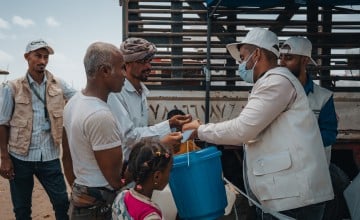
2. Yemen is the world’s fifth-largest internal displacement crisis
Over a decade of crisis has uprooted the lives of millions of Yemenis. The barriers to escaping the country entirely (either via Saudi Arabia or the Red or Arabian Seas), however, mean that Yemen’s is largely a crisis for internally-displaced persons: over 4.5 million, to be exact. Last year alone, nearly 45,000 families were newly-displaced, owing to a combination of fighting and severe weather events (including October 2023’s Cyclone Tej). Around 80% of all internally-displaced Yemenis are women and children, and face additional protection risks in displacement communities.
The protected crisis has also created an endemic situation of forced displacement, with 4.5 million internally-displaced persons (IDPs), 30% of whom have been forced to flee multiple times. Living conditions have quickly worsened for many: 49% of the population lack access to clean water, and only 50% have access to functioning health facilities. Roughly one-third of internally-displaced Yemenis (largely from the marginalized Muhamasheen community) live in collective displacement sites, which are among the least tenable options for long-term accommodation. As UN OCHA reports, Muhamasheen make up 10% of the country’s population, but 76% of all Muhamasheen lack sufficient income to cover their needs, and 45% lack adequate shelter.
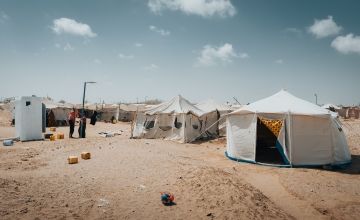
3. Under “normal” conditions, Yemen relied on imports for 70% of its food
As Helen Lackner notes in Yemen in Crisis, prior to the current conflict (i.e, under the “best” possible circumstances), Yemen relied on imports for 70% of its food needs. It imported 90% of the country’s main staple, wheat, and 100% of its rice, tea, and sugar. At the onset of the war, the country’s main sea port, Hodeida, faced conflict-related restrictions. The economic effects of the war also meant that commercial importers weren’t able to get the letters of credit they needed to buy staples like grain.
This is one of the key factors in Yemen’s hunger crisis, one that is poised to leave 17.6 million people — half of the country’s total population — at severe levels of food insecurity in 2024. Of these 17.6 million, 6 million are expected to experience emergency levels of food insecurity (one step away from famine or famine-like conditions). Further complicating matters is climate change. 70% of Yemenis live in rural areas and rely on agriculture for their food and livelihoods. However, droughts, water scarcity, and the increasing cost of farming supplies all present huge challenges. As a result, the UN estimates that harvests will decrease by 40% this year.
These circumstances have an outsized impact on Yemen’s most vulnerable people: Nearly half of all children under the age of five are estimated to be experiencing moderate to severe stunting due to malnutrition, and approximately 2 to 3 million boys and girls are at risk of increased mortality due to malnutrition every year. For pregnant women and breastfeeding mothers, acute malnutrition can be doubly dangerous: Malnourished mothers are more likely to have malnourished children, who will face a serious risk of permanent physical and cognitive stunting.
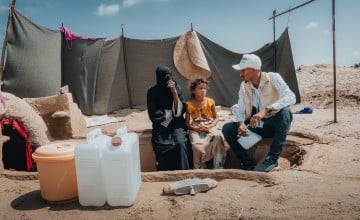
4. Yemen has a “double burden” of disease and armed conflict
The United Nations describes the combination of disease and conflict in Yemen as a “double burden,” which captures the urgency of the country’s health crisis. Only 50% of the country’s hospitals are at least partially functioning, with 71% of the country’s districts having severe or extreme health needs.
The country’s water, sanitation, and hygiene services have suffered over the last 10 years. 27% of Yemenis don’t have access to safe water — a figure that jumps up to 36% in rural areas. Additionally, 49% of Yemenis don’t have access to enough drinking water. This compromised infrastructure has led to rising rates of measles, polio, and dengue infections (Yemen is also one of the hot spots in the global cholera epidemic).
These infections have spread in part because 70% of children aged 3 have not received a full course of basic vaccinations as recommended by the national immunisation schedule. 50% of all Yemenis requiring healthcare services are children under the age of 5, and an additional 24% are women, many of whom require reproductive healthcare support. People with disabilities and chronic illnesses are also at risk for not getting the support or continuous treatments that they require.
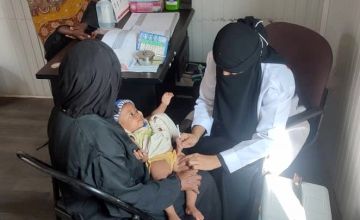
5. A truce in 2022 continues to offer hope — but we’re far from peace
On April 2, 2022, the United Nations facilitated a nationwide truce in Yemen that officially lasted for six months. Even after it expired in October, the UN notes that “the sharp decrease in conflict-related casualties recorded in 2022 attributed to the truce continued throughout 2023”. Casualties dropped by 42%, the lowest rates since the UN began monitoring in 2018.
However, the UN also notes that “the path forward for Yemen in 2024 remains uncertain". Truce-like conditions “offer a glimmer of hope,” however conditions on the frontlines of ongoing conflict remain tense and dire for civilians and could lead to additional displacement and casualties in the year ahead. In the meantime, the need for humanitarian intervention remains high.
Concern in Yemen
Concern launched a formal programme in Yemen in early 2024 designed to meet the ongoing urgent humanitarian needs. Our key areas of focus are Health & Nutrition and Water, Sanitation, and Hygiene (WASH).
In partnership with Medair, we’re delivering health services to five healthcare facilities in Lahij Governorate, including implementing community-level activities and supporting community volunteers. We’re also supporting a healthcare facility in Tuban District, which had previously been nonfunctional due to a lack of staff and supplies. So far, we have facilitated access to healthcare for over 10,400 people — more than half of whom are women and children.
Water and sanitation needs are among the highest in IDP camps, and we’ve responded to these needs by supporting WASH services in two camps in Aden Governorate, rehabilitating water wells and building latrines to help prevent the spread of waterborne diseases. Our focus also includes working with local water departments at both the governorate and district levels to support the rehabilitation of water networks and sanitation services in crowded urban settings, for both IDP and host communities.


